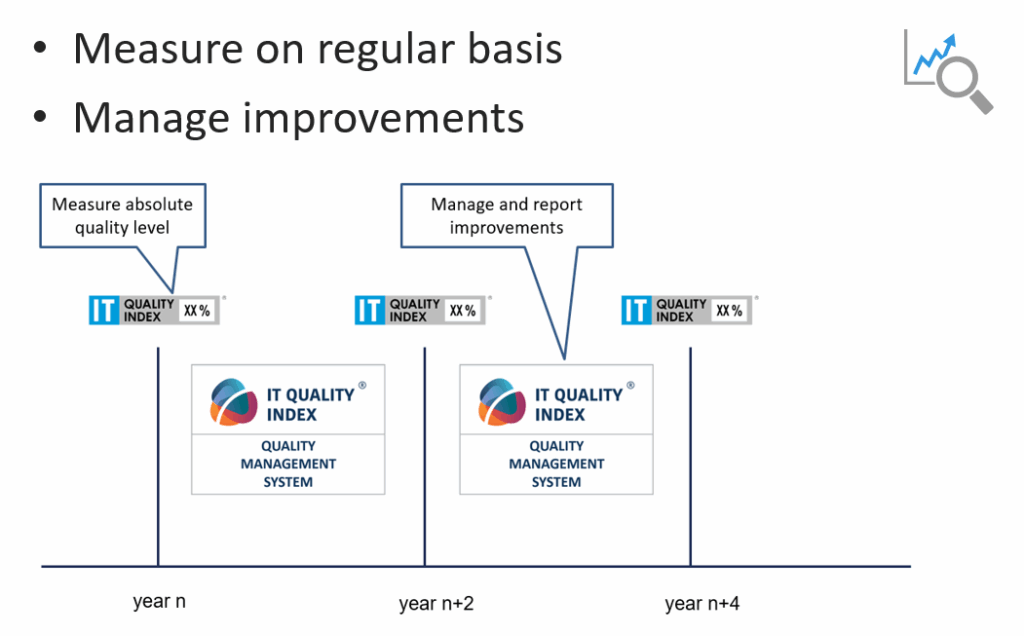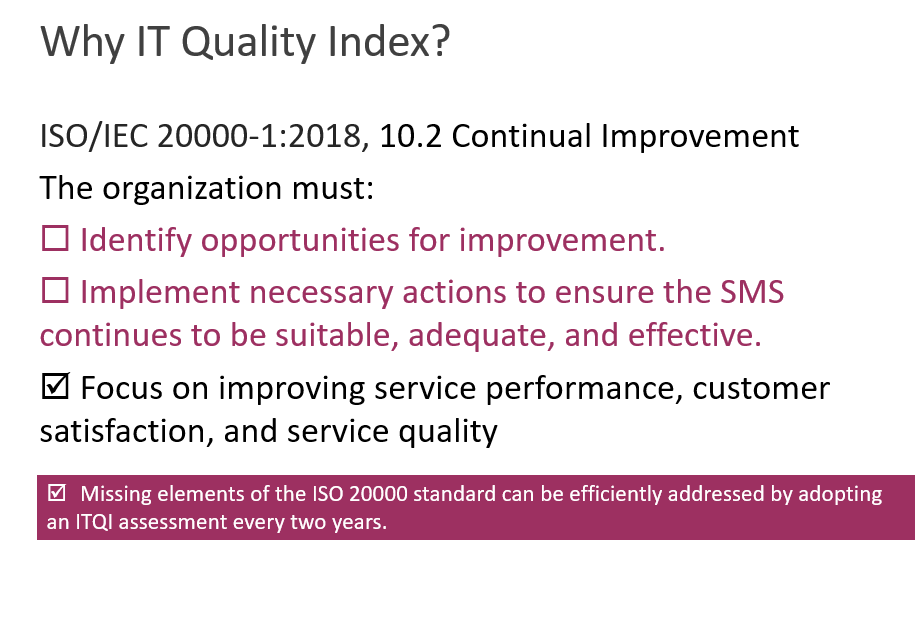Many parts of a Service Management System (SMS), as described in ISO/IEC 20000, are well known and widely supported by established practices, tools, and even AI-powered solutions. Commonly mature areas of the SMS include the Service Desk, Incident Management, Request Fulfilment, Change Management, the Service Catalogue, Service Level Management and reporting, and customer satisfaction surveys. These components are typically backed by a wealth of metrics and analytics.
However, a common yet invisible issue arises: management efforts tend to focus on these visible and well-established areas, while other critical components remain underdeveloped.
For example, ISO/IEC 20000 clause 10.2 recommends adopting a managed approach to improvements:
- A/ Identify opportunities for improvement.
- B/ Implement necessary actions to ensure the SMS remains suitable, adequate, and effective.
- C/ Focus on improving service performance, customer satisfaction, and service quality.
Full adoption of the standard may not be necessary, especially for internal IT departments. However, ISO/IEC 20000 can serve as a valuable checklist to uncover missing elements of good IT governance. In practice, we often observe that part C/ is well supported and visibly implemented—while parts A/ and B/ are frequently missing.
This gap presents an opportunity for synergy between ISO/IEC 20000 and the IT Quality Index method, which can help address A/ and B/:
This approach delivers what ISO/IEC 20000 envisions. In practice, conducting an IT Quality Index assessment every two to three years enables the identification and implementation of continuous improvements. These improvements may include even “negative” changes—such as simplifying an overly complex service catalogue or reducing the scope of inefficient service level management processes that consume significant resources without delivering proportional value.
- Conduct IT Quality/Cost benchmarking to ensure the SMS remains adequate and effective (B/).
- Establish a structured IT Quality Management System, further supporting improvements planning (A/).
- Regularly measure the overall IT Quality Index to identify opportunities for improvement (A/).
The following image illustrates the typical chronological steps:

Summary:
Combining the IT Quality Index with ISO/IEC 20000 can be a powerful and efficient approach—even for IT departments that are not pursuing formal certification. It allows organizations to demonstrate efficient and adequate service management, while also taking a proactive, structured approach to continuous self-improvement. This positions IT as a vital and evolving part of the organization.
